MOST dogs living in the city have them – microchips embedded painlessly just under the skin, so when they slip the lead, they can easily be reunited with their owners. In NSW, it’s the law. The Companion Animals Act 1998 requires microchipping of cats and dogs prior to sale or ownership transfer, or by 12 weeks of age.
Under the
National Livestock Identification System (NLIS), cattle must have electronic eartags, while sheep and goats have visual identification eartags, and all movements must be recorded in the NLIS database to ensure lifetime traceability. A mob-based tracing system for pigs was added to the scheme in 2018.
When it comes to horses, however, there is no legal requirement to identify, register or trace their movements. While individual bodies, such as the thoroughbred racing industry, require horses to be microchipped and registered, there is no overarching scheme and no regulation to ensure movements and ownership changes are recorded.
With concerns about fatal diseases such as Hendra virus, which can kill humans, and equine influenza, there is a growing push for this to change.
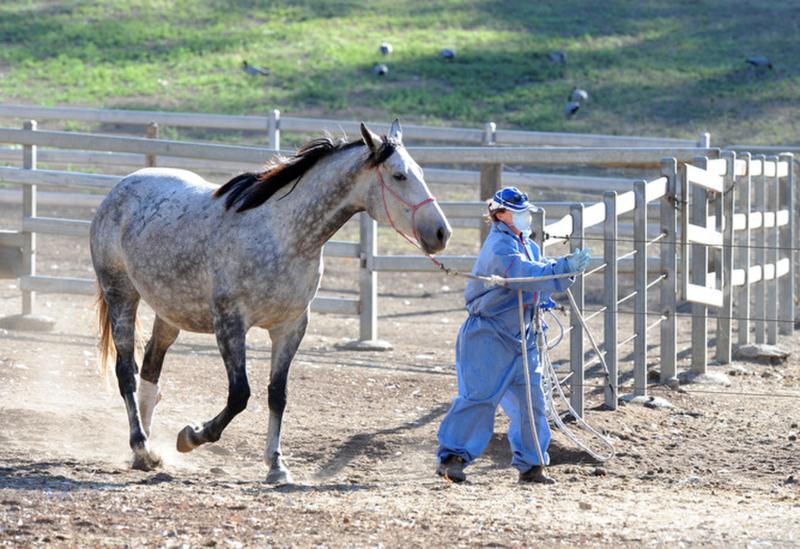 A health official attending to a horse at Cawarral in Queensland in 2009, after a vet contracted Hendra virus from a sick horse and later died. Source: AAP.
A health official attending to a horse at Cawarral in Queensland in 2009, after a vet contracted Hendra virus from a sick horse and later died. Source: AAP.
There has also been lobbying for lifetime traceability by Mark and Juliana Waugh, whose teenage daughter Sarah died in 2009 when she was thrown from a former racehorse used by TAFE NSW in a course for beginner jillaroos.
A
Senate inquiry into the feasibility of a national Horse Traceability Register was launched in February, generating a lot of interest. Submissions closed in April and a report is due in August. The NSW Department of Primary Industries (DPI) is also investigating options.
In 2017, the DPI conducted a survey on a proposal to make microchipping of all horses compulsory. More than two-thirds of the 2,243 survey respondents supported mandatory microchipping and 91% backed a national horse database.
National horse database to help reduce disease and biosecurity risks
The major benefits of a database were seen as increased traceability, better biosecurity risk control, more history of horse ownership, improved animal welfare, reduced crime and theft, and breeding control. The listed drawbacks included increased red tape, the cost of microchipping and duplication with other databases.
The responses, 97% of which came from individuals, represented 42,801 horses kept for a variety of uses, including pets, breeding, competition, recreation, riding schools, training and racing. That broad variety presents a challenge, says Peter Day, the DPI’s director of compliance, biosecurity and food safety.
“The horse industry is pretty diverse, from the thoroughbred racing industry which has very good identification and is well organised, down to pony clubs and backyard hacks,” he says.
In 2007, an outbreak of equine influenza in NSW brought horse movements to a standstill and cost more than $130 million to contain and eradicate. Infecting 47,000 horses on 5,943 properties across the state, it was regarded as the most serious animal disease emergency in recent history, and spawned a raft of studies, reviews and reports.
_preview_maxWidth_800_maxHeight_8000_embedMetadata_true.jpg) Signs alerted drivers that horses could not leave the purple containment zone established after equine influenza was detected in horses stabled at Centennial Parklands Equestrian Centre in Sydney in 2007. Source: Alamy.
Signs alerted drivers that horses could not leave the purple containment zone established after equine influenza was detected in horses stabled at Centennial Parklands Equestrian Centre in Sydney in 2007. Source: Alamy.
Another major concern in NSW, Hendra virus, is carried by flying foxes. While uncommon, the virus infects horses causing severe disease or death, and may spread to people or animals in close contact with infected horses.
Obstacles to introducing national horse register
Peter Day says one of the reasons a national register for horses hasn’t been introduced to date is the lack of demand from the horse industry on either trade or biosecurity grounds.
“Horses are an anomaly. They’re not a major trade export animal, which cuts back on implications for market access and the value of the industry for food production.” – Peter Day
While horsemeat is exported, the contribution to the economy is small compared with the rest of the red meat industry. In 2017-18, Australia exported 2,000 tonnes of horsemeat valued at $9.3 million, compared to beef and sheepmeat exports of 1.4 million tonnes valued at $11.3 billion.
And when it comes to biosecurity, Peter says the success of the national standstill, surveillance and vaccination programs that eradicated equine influenza within six months in 2007/2008 showed it was possible to manage exotic disease outbreaks.
RELATED:
What’s bugging our biosecurity experts?
However, as technological advances have seen electronic identification tools such as microchips become cheaper and better, a national register may be more feasible. “We’re looking to see what’s changed, whether there will be economic benefit to [a compulsory register] and explore the obstacles,” Peter says.
Australian Stock Horse Society (ASHA) chair Larry Cutler, who represents over 9,500 individual members with more than 180,000 horses registered in the stud book, says there are two main obstacles to a national register – cost and persuading horse owners who are not already members of a breed society of the benefits.
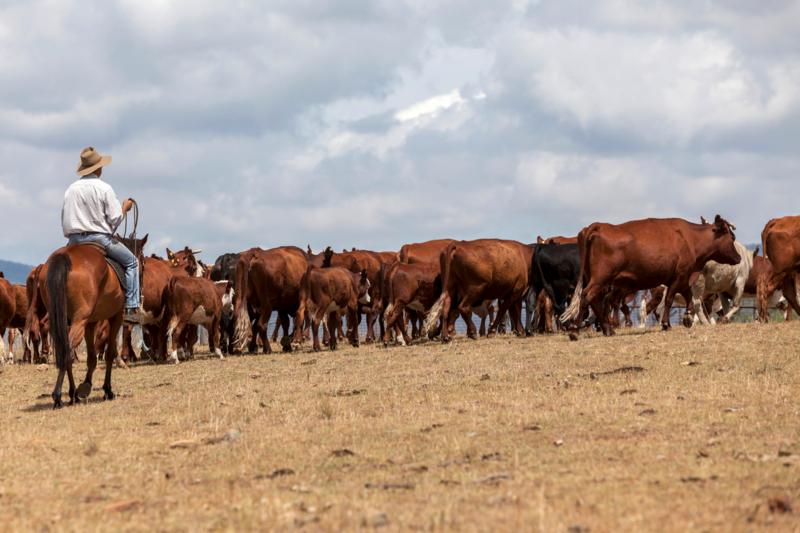 Despite farmers turning more and more to motorised transport on their farm, there are still over 9500 individual members of Australian Stock Horse Society. Source: Getty Images.
Despite farmers turning more and more to motorised transport on their farm, there are still over 9500 individual members of Australian Stock Horse Society. Source: Getty Images.
He says he supports a national register, in principle, but wouldn’t like society members to have to pay another fee to fund the scheme.
“We are more than happy to share our registered database,” he says. “We can go into our stock horse database tomorrow and tell you where every horse is and who’s got what. But there’s a hell of a lot of people with weekend horses, little crossbred ponies and things – people who bought those horses either as yearlings or foals and didn’t bother registering them – and they’re not interested in being a member of anything.”
Getting a national register off the ground would require authorities to encourage horse owners with education and awareness campaigns rather than “just by enforcing it with a big stick”, he says.
Costs and education key considerations for national register
The importance of consultation and better education of all horse owners was also highlighted in the NSW Farmers’ submission to the 2017 DPI survey.
The Association’s senior policy officer – cropping and horticulture Alexandra Bunton says any changes would need to be communicated to lifestyle and peri-urban horse owners as well as event organisers and industry professionals who might be less likely to understand why they’re necessary.
 NSW Farmers senior policy officer for cropping and horticulture, Alexandra Bunton. Photo by Nick Cubbin.
NSW Farmers senior policy officer for cropping and horticulture, Alexandra Bunton. Photo by Nick Cubbin.
Any system identifying horses would need to be simple, easy to access, low cost and consolidate existing microchipping registers to allow verification of a horse’s identity by the NSW DPI, Local Land Services and NSW Police, Alexandra says.
“The main focus for us is to protect industry and other animals. It’s making sure that each area of the industry has an adequate system to trace their animals, so they don’t negatively impact any other sector.” – Alexandra Bunton
Horse breeders Peter and Aileen Hogan operate Fantasy Australian Stock Horses on their farm near Merriwa in the Hunter region. They vividly remember the nightmare of the equine influenza outbreak. Despite quarantining the property, all but two of their horses contracted the virus. Fortunately, after expensive treatment, all survived.
Aileen says a national register for enabling rapid responses to disease outbreaks was essential, but any extra cost “would be outrageous” for the owners of horses already registered through one of 70 or more individual horse breed associations in Australia.
It costs more than $700 to register an Australian stock horse sire, including ASHA registration fee, DNA tests, freeze branding and inspection. ASHA registration for other horses starts at $80 for a gelding. On top of that, there’s an annual membership fee of $190.
“I would think if any legislation was going to go through, it should recognise registration of horses with breed societies. Horses outside a breed society would need to be identified for biosecurity,” Aileen says.
Tragic horse riding accident leads to push for register
It has been a decade since Sarah Waugh was killed in a tragic horse riding accident. Her parents, Mark and Juliana Waugh, have lead a tireless crusade to ensure there will be no more deaths.
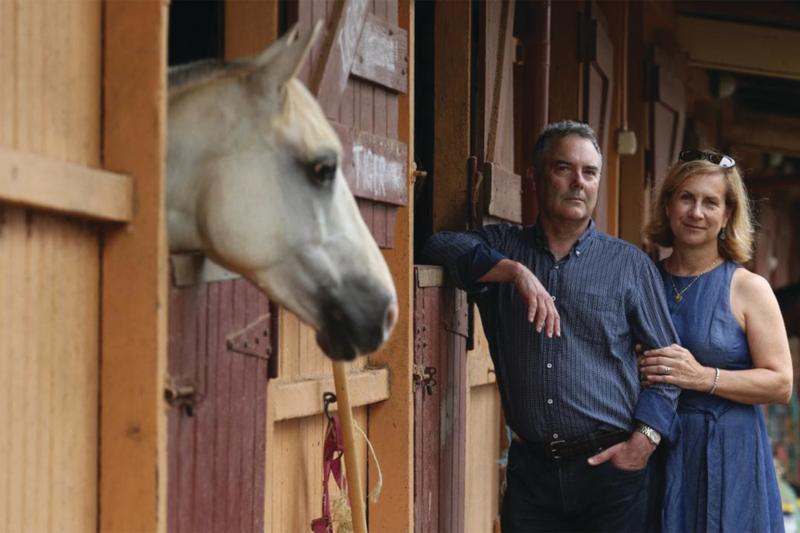 Mark and Juliana Waugh are tireless campaigners for a national horse register. Source: Newspix.
Mark and Juliana Waugh are tireless campaigners for a national horse register. Source: Newspix.
Sarah was just 18 when she was killed as a former racehorse she was riding bolted during an eight-week TAFE jillaroo course at Dubbo. An inexperienced rider, Sarah fell from the horse. It later emerged the thoroughbred horse, hired by the TAFE’s Western Institute from a supplier, had competed in a race about six weeks before the fatal incident.
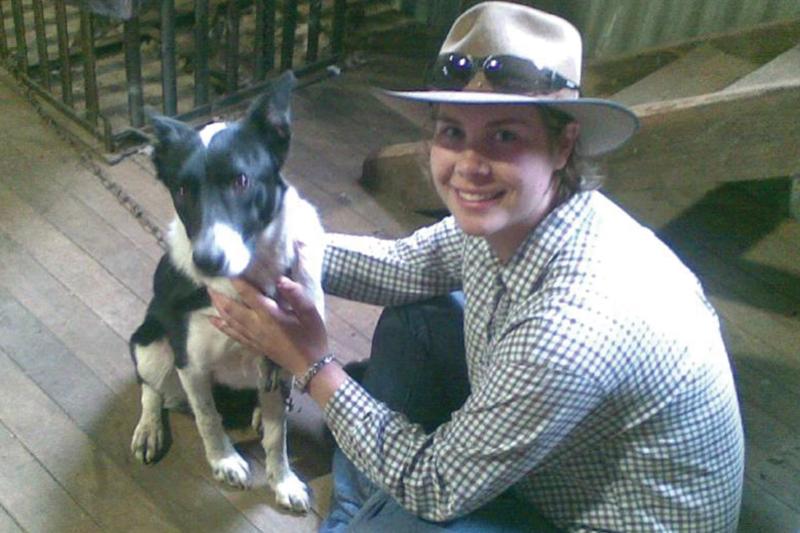 Sarah was killed when a former racehorse she was riding bolted. Sarah had not been aware of the horse’s history. Source: Supplied.
Sarah was killed when a former racehorse she was riding bolted. Sarah had not been aware of the horse’s history. Source: Supplied.
Five years later, a TAFE representative told the Sydney District Court its staff had failed to check the history of the horses for use by beginner riders. Those who ran the course told an inquest that, had they known the horse was fresh off the track, they would never have put a beginner on it.
The Waughs have campaigned for new rules to ensure the history of horses can be accessed. They were instrumental in the introduction in early 2017 of a NSW code of practice to manage the risks associated with new and inexperienced riders who interact with horses in the workplace.
Now, they are lobbying for a national horse register to support the code.
“The fact there was no horse register in Australia tragically contributed to Sarah’s preventable death and, as was discovered later – as evidence was presented across three court cases following the accident – there is often great difficulty in identifying and confirming details about a horse in Australia which is leased or sold,” Juliana has told journalists.
Her campaigning work was recognised when she was named a Member of the Order of Australia (AM) for services to the community last June.
The numbers behind Australia’s horse industry
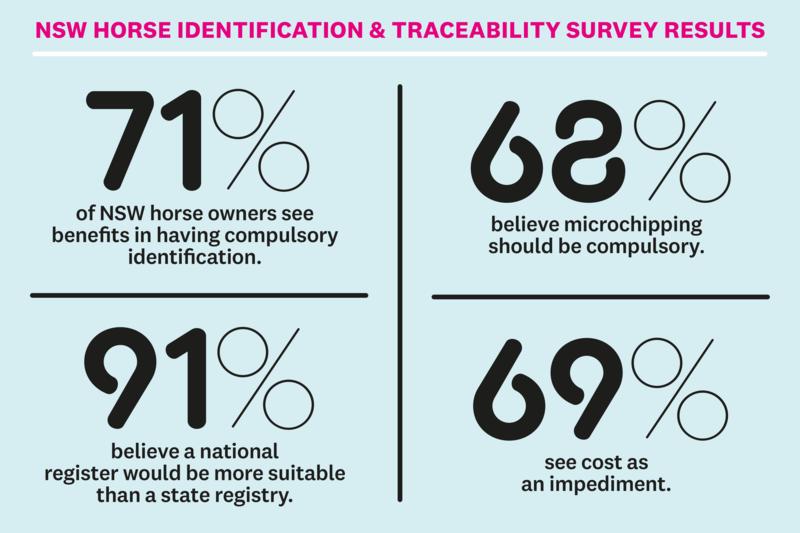
- There are 900,000 to 1.5 million horses in Australia. Brumbies account for 300,000 of that, while 83,639 are owned by NSW agricultural businesses.
- There is no national state law governing the registration or movement of horses within Australia.
- The horse mortality rate from the Hendra virus is 79%
- From 1994 to August 2017 there were 60 known outbreaks of Hendra resulting in the death of 102 horses and four people
- The infection rate of equine influenza is almost 100% in an unvaccinated horse population
- Since 2012, any property where horses are kept must have a Property Identification Code, which costs $11-$22 in NSW.
- Horses must be microchipped to be vaccinated against Hendra virus. Microchipping was also required for the equine influenza vaccination following the 2007 outbreak.
- All thoroughbred foals born in Australia must be microchipped as a condition of Australian Studbook registration.
- Microchipping of horses has been required in the European Union since 2009. From October 2020 it will also be mandatory in the United Kingdom, with a Central Equine Database being introduced.